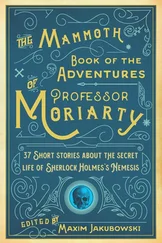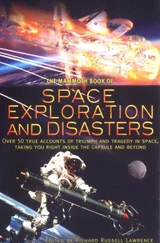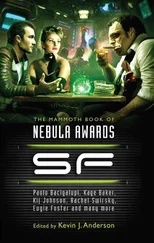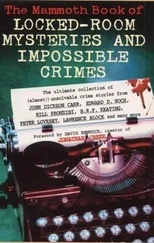China joins the space race
On 17 October 2003 Oliver August reported in The Times :
As China’s first man in space returned to cheering crowds yesterday, Beijing announced plans for a permanent Space laboratory manned by Chinese scientists in competition with the US-Russian station.
“The maiden manned space-flight is the first step of China’s space programme,” said Xie Mingbao, a leading engineer. The next stage would be a space station, he said.
The announcement hints at the country’s growing confidence following the successful launch of the Shenzhou 5, which has triggered feverish interest across China. “Great Leap Skyward,” the China Daily newspaper enthused.
The astronaut Yang Liwei, 38, touched down in his Russian-designed space capsule near the intended landing zone on grassland close to the Mongolian border after circling the Earth 14 times in 21 hours.
“It is a splendid moment in the history of my motherland and also the greatest day of my life,” he said. “The spaceship operated well.”
After only two hours on Earth, Lieutenant Colonel Yang was put on a plane and flown to the capital for interviews, congratulatory photographs and handshakes with China’s leaders. Thousands gathered at Beijing’s millennium monument to cheer his return and hail him a national hero.
The story was splashed across the front pages of most newspapers and many television and radio stations carried blanket coverage of Colonel Yang’s return in his bronze capsule. On the Internet, Chinese expressed feelings of pride, mixed with a few voices warning China could not afford a space programme.
“As a Chinese person, I am very proud of my country,” said one of more than 40,000 messages posted on Chinese portal Sina.com. “Long live the motherland! Long live the Chinese nationality!” State media showed children marvelling at a life-sized model of the Shenzhou 5 during a field trip to the China Science and Technology Museum.
In private, some Chinese are more circumspect. “What is there to be proud of? The Americans are taking strolls on the moon. We’ve just circled the Earth a few times,” said Wang Changlin, a driver. “We’ll never catch up with America.”
China has decided to issue 10.2 million sets of stamps to commemorate the country’s success in putting a man into space. The stamps will show motifs such as “astronaut at work” and “triumphant return”.
Despite its many plans for further space exploration, China has ruled out building an American-style space shuttle. It also disputed foreign estimates of the cost involved in building and launching the craft, claiming the price tag was a mere £1.5 billion. Western analysts have suggested the 11-year programme will so far have cost China close to £13 billion.
Mr Xie said 60 per cent of China’s budget was spent on “consumable equipment” such as rocket boosters, while 40 per cent paid for control centres and other technology infrastructure that can be used on future missions.
But despite talk of a permanent space laboratory China has no plans to rush back to the cosmos. Space officlals said the next manned flight was a year or two away. On the list for future flights are spacewalks and exercises in docking two spacecraft.
Among the first to congratulate China was Vladimir Putin, the Russian President, who went on to address fears of military competition in space. He said:
“I am sure that China’s full membership in the family of space powers will serve the cause of peace, security and stability on Earth, the development of science and technology and the progress of world civilization.”
The Russian government sold Beijing the Soyuz design for a three-man space capsule, cutting short development time. Mr Putin played down the extent of well-paid Russian help, which China has kept secret from its people to enhance national pride.
President Putin said:
“This is the well deserved and significant result of the Chinese people’s labour, of the succesful progress of your country on the path of comprehensive development and transformation into a modern world power.”
It was one small, throwaway remark for Yang Liwei, but one giant gaffe for millions of his compatriots.
When China’s first astronaut emerged from his capsule yesterday, touching down near the Mongolian border after orbiting Earth 14 times in 21 hours, there was only one question on the lips of those who gathered around him.
An eager television interviewer asked:
“Is it true that you can see the Great Wall of China from space?”
Yang’s answer? “Erm, no.” with those two words, Lieutenant Colonel Yang dispelled a modern myth which has become a staple of pub quizzes, been repeated in schools and even found its way into the Trivial Pursuit game.
Yang’s answer came as no surprise to NASA, whose astronauts have said for decades that all that can be seen is the white of clouds, the blue of the oceans, the yellow of deserts and a few green patches of vegetation. Despite being 1,500 miles (2,400km) long and 30ft wide at the base, the wall cannot be seen at all.
It is unclear where the myth began, but some at NASA believe that it started with some boastful after-dinner claims during the early days of the manned space programme.
There was some consolation for China, and for the rest of us, from Yang, however. Asked how Earth looked from orbit, he replied: “It’s truly beautiful.”
2014: the Rosetta space odyssey
On 2 March 2004 a European spacecraft that will chase down a comet in search of clues to the origin of life on Earth lifted off from the Kourou spaceport in French Guiana. An Ariane-5 rocket carrying a European Space Agency probe set course for the comet Churyumov-Gerasimenko.
The Rosetta probe will take 12 years to catch the comet Churyumov-Gerasimenko. When it does it will become the first spacecraft to make a soft, controlled landing on the nucleus of one of the solar system’s enigmatic icy wanderers.
The mission aims to unlock the secrets of the solar system’s beginnings 4.6 billion years ago, of which comets are largely unchanged relics, containing the same materials from which the planets were formed.
It will answer important questions about what the “dirty snowballs” are made of, and even whether comets could have “seeded” Earth with the water and organic chemicals required for the genesis of life.
Rosetta will use three Earth fly-bys and another of Mars as a “gravity slingshot” to catapult it towards Churyumov-Gerasimenko, which has a core about the size of Heathrow Airport.
On completing its 7 billon-mile journey in 2014, Rosetta will orbit the comet’s nucleus and drop a lander named Philae, the size of a washing machine, on to its surface.
The mother ship takes its name from the Rosetta Stone which was discovered in Egypt in 1799 and provided the first key to deciphering hieroglyphics. Scientists hope the data it gathers will offer equally critical insights to the origins of the solar system and terrestrial life. Its Philae lander is named after an island in the Nile where an obelisk critical to the understanding of the Rosetta Stone was found.
The probe was delayed several times because of problems with the Ariane-5 rocket and had originally been scheduled to visit a different comet, named Wirtanen. The European Space Agency changed its target when the Wirtanen launch window was missed early in 2003.
Britain has contributed £70 million towards the probe’s £600 million cost, and it was partially built by the Stevenage-based satellite company EADS-Astrium. British scientists have also contributed to 11 of the 21 instruments it will fly.
Читать дальше












